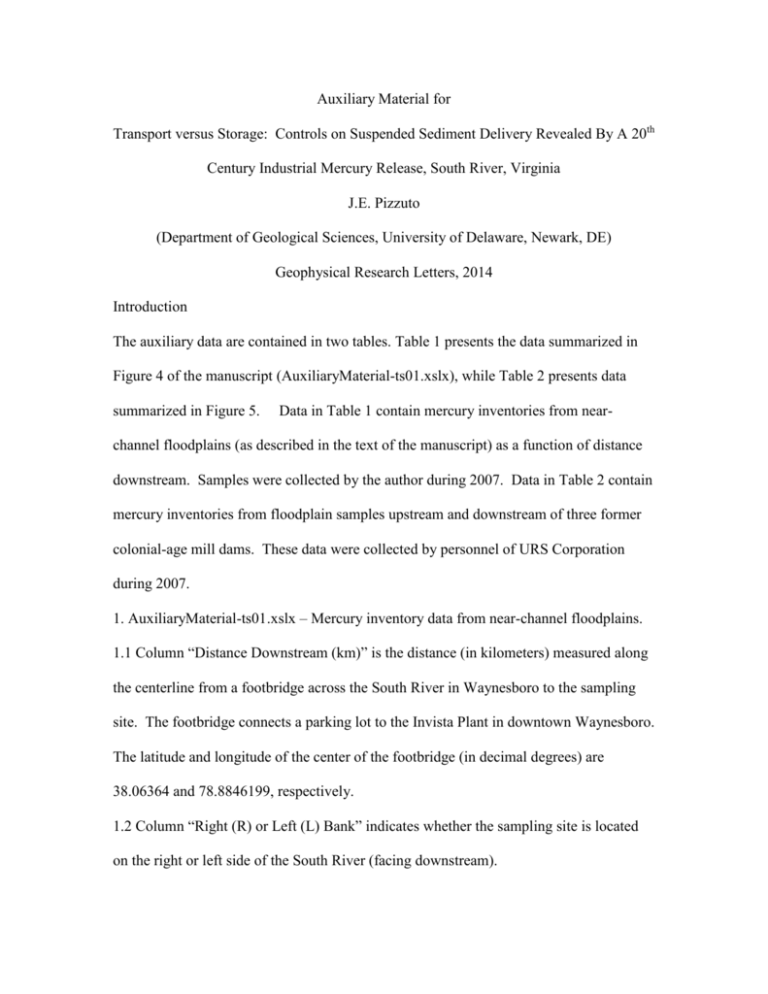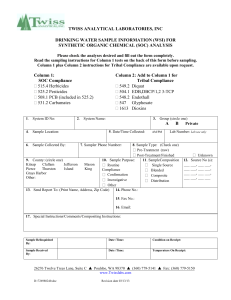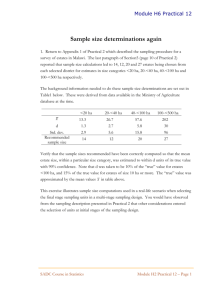AuxiliaryMaterialReadme
advertisement

Auxiliary Material for Transport versus Storage: Controls on Suspended Sediment Delivery Revealed By A 20th Century Industrial Mercury Release, South River, Virginia J.E. Pizzuto (Department of Geological Sciences, University of Delaware, Newark, DE) Geophysical Research Letters, 2014 Introduction The auxiliary data are contained in two tables. Table 1 presents the data summarized in Figure 4 of the manuscript (AuxiliaryMaterial-ts01.xslx), while Table 2 presents data summarized in Figure 5. Data in Table 1 contain mercury inventories from near- channel floodplains (as described in the text of the manuscript) as a function of distance downstream. Samples were collected by the author during 2007. Data in Table 2 contain mercury inventories from floodplain samples upstream and downstream of three former colonial-age mill dams. These data were collected by personnel of URS Corporation during 2007. 1. AuxiliaryMaterial-ts01.xslx – Mercury inventory data from near-channel floodplains. 1.1 Column “Distance Downstream (km)” is the distance (in kilometers) measured along the centerline from a footbridge across the South River in Waynesboro to the sampling site. The footbridge connects a parking lot to the Invista Plant in downtown Waynesboro. The latitude and longitude of the center of the footbridge (in decimal degrees) are 38.06364 and 78.8846199, respectively. 1.2 Column “Right (R) or Left (L) Bank” indicates whether the sampling site is located on the right or left side of the South River (facing downstream). 1.3 Column “Latitude” is the latitude of the sampling site (in decimal degrees). 1.4 Column “Longitude” is the longitude of the sampling site (in decimal degrees). 1.5 Column “Number of Samples Obtained” is the total number of samples from each sampling location. 1.6 Column “% Silt-Clay” is the average content of silt and clay of all samples obtained at each location (the average is weighted by the vertical interval of each individual sample). 1.7 Column “Mercury Inventory (kg/m2 ” is the mercury inventory at the sampling site in kilograms per square meter. 2. AuxiliaryMaterial-ts02.xslx – Mercury inventory data from floodplains upstream of three colonial-age mill dams along the South River. 2.1 Column “Dam” indicates which of the three dams the sample is located near. The locations of the three dams (Dooms Dam, upstream of Crimora, and at the August Forestry Center) are illustrated in Figure 1. 2.2 Column “Distance from Dam (km) Right (R) presents the distance from the dam to the sampling site, measured along the centerline of the channel of the South River. Negative values are upstream of the dam, while positive values are downstream. 2.3 Column “Latitude” is the latitude of the sampling site (in decimal degrees). 2.4 Column “Longitude” is the longitude of the sampling site (in decimal degrees). 2.5 Column “Flooding Freq. (yr)” is the frequency of inundation by overbank flows estimated by URS Corporation using the flood frequency software HEC-RAS. URS Corporation expresses flood frequency results for the South River in the following categories: < 0.3 years, 0.3-2 years, 2-5 years, 5-62 years, and > 62 years. 2.6 Column “% Silt-Clay” is the average content of silt and clay of all samples obtained at each location (the average is weighted by the vertical interval of each individual sample). 2.7 Column “Mercury Inventory (kg/m2 ” is the mercury inventory at the sampling site in kilograms per square meter.








